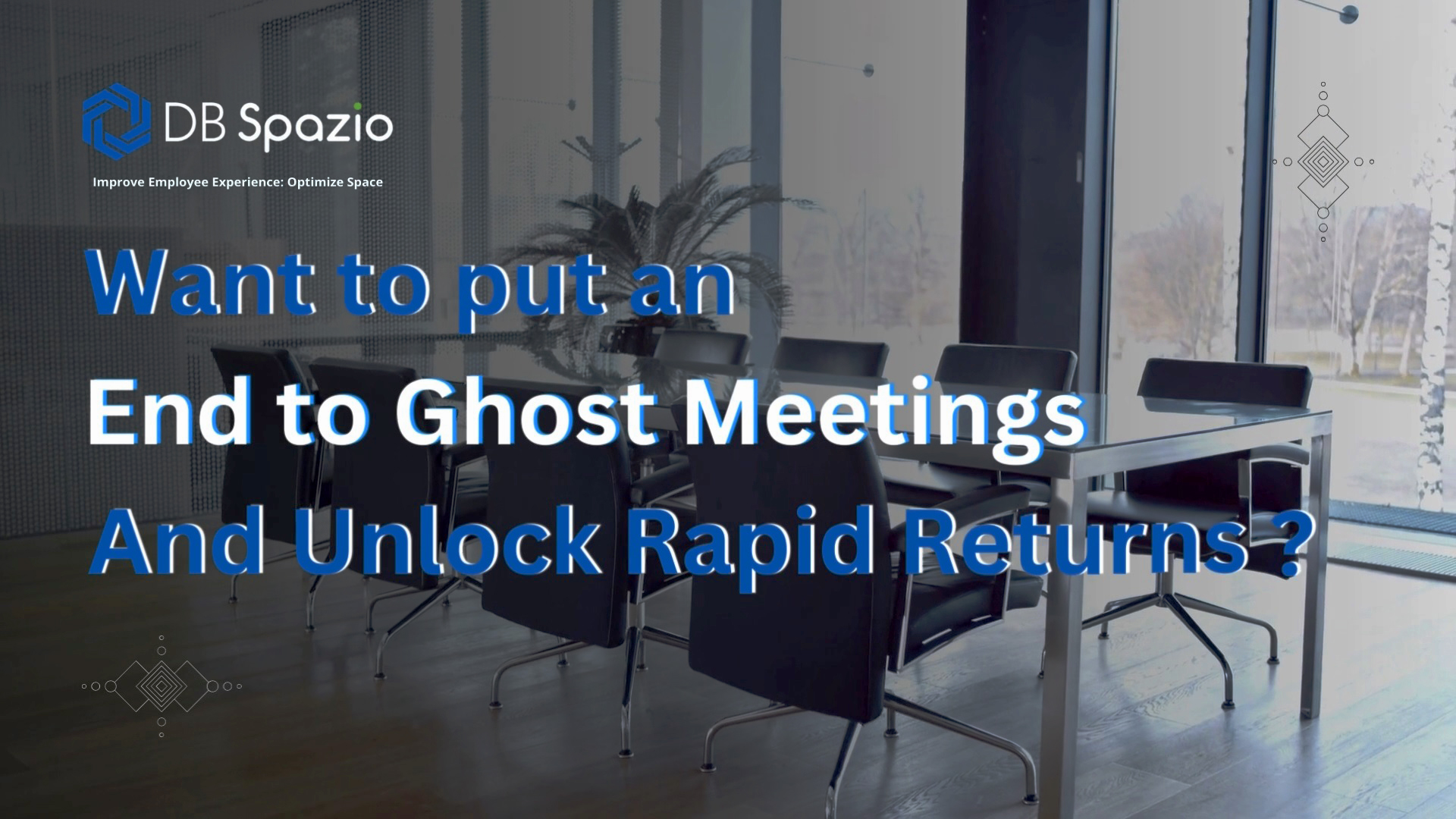Elevate Efficiency with Smart Meeting Room Booking
Introduction
In our professional lives, we’ve all encountered a familiar scenario of ghost meetings: we do meeting room booking with every intention to join, only to find ourselves and fellow participants unable to attend due to unforeseen circumstances. Yet, amidst this situation, the thought of cancelling the meeting room booking often slips our minds, resulting in an empty meeting space during the scheduled time. Consequently, while the room sits unoccupied, other colleagues in need are met with the perception of a booked room on their calendars, impeding their ability to secure available resources. Compounding the situation is the scenario where the meeting is recurring, and participants consistently overlook their commitment.
This occurrence is commonly known as a “ghost meeting” – a meeting planned but left unattended, thereby wasting a valuable workspace resource.
Although it might initially appear inconsequential, the impact is far from negligible. According to a workplace analytics report, a striking 34% of scheduled meetings conclude as no-shows, and the average U.S. employee engages in 62 meetings per month. When we extrapolate these figures to encompass the entire organization, the scale of wasted space and associated costs increases exponentially.
Interested in uncovering the financial impact of ghost bookings on your organization?
Reach out to us and discover your potential savings in just a matter of minutes.
In this era of the hybrid workplace, where collaborative efforts form the core of office visits, the availability of meeting rooms takes on an even greater significance.
As we delve into the world of ghost meetings and their impact, it becomes evident that addressing this issue is essential for optimizing workspace utilization and saving costs for the organisation.
Exploring The Hidden Cost of Ghost Meetings
When companies aim to optimize their workplaces, they often focus on things like employee attendance and space usage patterns. But there’s a less obvious cost of ghost meetings that often goes unnoticed due to lack of accessible data. While these costs might initially appear inconsequential, allow us to illustrate how the cumulative impact of ghost meetings can impact your budgets.
According to a USA national report from August 2023, the average cost for office space is about $37.89 per sq. ft. per year in the USA. As a general guideline within flexible office setups, the ratio is about 1 meeting room for every 10 to 20 employees. So, for an office with 1,000 people, you’d need around 50 meeting rooms.
Studies show that ghost meetings waste about 30 hours of meeting room time per room each month. If you consider that the average meeting room is around 150 sq. ft. this adds up to a loss of about $40,383 per year for a 1,000-person office. In India, where office rents average about Rs. 95 per sq. ft. per month, the annual loss due to ghost meetings is around Rs. ₹12 lakh (₹1.2 million).
Calculate your organization’s annual ghost meeting losses now.
Try our Ghost Meeting Room Wastage & Payback Calculator
Putting an End to Ghost Meetings
Dealing with ghost meetings is crucial for organizations, and finding a solution to this problem is surprisingly straightforward. By following three simple steps, enterprises can effectively address this issue:
1. Enforce Check-In within Buffer Time
A simple yet cost-effective approach to address ghost meeting rooms involves requiring employees to check in upon arriving for their scheduled meetings. This can be seamlessly managed through software-based mechanisms. To provide a window for check-ins, a buffer time (e.g., 10 minutes) can be established, allowing attendees to check in from the scheduled start time until the end of the buffer period. For instance, if a meeting is set for 11 am with a 10-minute buffer, attendees can check in until 11:10 am. Should no check-in occur within this window, the meeting room automatically becomes available for other users to book.
2. Automated Meeting Cancellation
Automated cancellation is a key element for several reasons. It ensures that meeting room bookings are cancelled on calendars promptly, without any manual intervention, freeing up the space for others to reserve.
To tackle recurring ghost meetings, aka “zombie meetings,” the system can automatically cancel the entire sequence of meetings if the meeting room remains unchecked for a predetermined number of consecutive meetings. For example, if the set number is three, and three consecutive recurrent meetings go unattended, the system cancels the sequence and notifies the host.
3. Analyse Ghost Meeting Data and Reclaim Time
Analysing instances of ghost meetings is essential for minimizing waste. By examining data based on departments, zones, employees, and meeting room sizes, organizations can hold awareness sessions with relevant stakeholders. Regular analysis is also important to verify whether the implemented solution is effectively reducing waste and saving costs for the company.
Comprehensive Meeting Room Management solutions like DB Spazio simplify the process of combating ghost meetings. The solution by default provides all the features listed above.
Benefits

There are numerous benefits associated with the adoption of a Meeting Room Management Solution. Some of these benefits are outlined below.
1. Significant Space Cost Savings & Quick RoI
As elaborated in the preceding section, enterprises stand to achieve substantial cost savings through the deployment of a Meeting Room Management Solution. Using illustrative cost-saving scenarios presented above, the investment in Basic package of DB Spazio solution (comprising Desk Booking, Meeting Room Booking, Ghost Room Management with Analytics), the tangible returns become evident. The funds saved from addressing ghost meeting room management alone can recover the investment in as little as five months in the USA and in less than a year in India. Additionally, this solution leads to improved meeting room availability for employees, effectively enhancing overall space utilization.
Want to know the cost savings and RoI by deploying DB Spazio’s Meeting Room Management Solution?
Try the calculator!
2. Optimising Energy Consumption & Help Achieve Sustainability Goals
Many companies seamlessly integrate their energy management systems with the meeting room booking solution. This synergy allows for automatic turning off of the lighting and air conditioning systems in the meeting room when it is not in use. This implies not just extra savings on energy usage, but also aids organizations in reaching their sustainability objectives.
3. Cultivation of Punctuality and Resource Respect
This solution fosters a culture of punctuality among employees, imparting the significance of valuing each other’s time and the organization’s resources. By curbing the prevalence of ghost meetings, employees learn the importance of optimizing schedules and making the most of available resources.
Conclusion
As we unveil the truth behind ghost meetings, we uncover their hidden financial implications and hurdles in utilising space efficiently. Through effective measures like software based check-ins, automated cancellations, we dispel these inefficiencies, nurturing a workplace culture of timeliness and efficiency. Not only do we eliminate waste, but we also harness energy savings and promote sustainability. It’s a path to both immediate payback and a more responsible future.




